Question
Issue: How to fix error 0x80043103 (No error description available) in Windows?
Hello. I tried to delete a file on my Windows PC but I receive an error 0x80043103 (No error description available). How do I get rid of it?
Solved Answer
Error 0x80043103 is a common error in Windows that can occur for a variety of reasons. It prevents users from deleting files. The error message itself does not provide much information, as it simply states that “No error description is available.” This can make it difficult to determine the cause of the error and how to fix it. The full message reads as follows:
An unexpected error is keeping you from deleting the file. If you continue to receive this error, you can use the error code to search for help with this problem. Error 0x80043103: No error description available.
One possible reason for this error is a bug or a glitch, in which case, it would be worth a try to simply restart the system. Another reason could be the Windows Firewall. It could be stopping the user from deleting the file as a security precaution. People could also try to delete the file in Clean Boot mode which prevents non-Windows apps from running. If the error is caused by a third-party application you should probably delete it.
In this guide, you will find 6 steps that should help you fix error 0x80043103 (No error description available) in Windows. Keep in mind that the manual troubleshooting process can be lengthy. If you want to avoid it, try using a maintenance tool like FortectMac Washing Machine X9. It can fix most system errors, BSODs,[1] corrupted files, registry[2] issues, or clear cookies and cache.[3] Otherwise, follow the step-by-step instructions below.
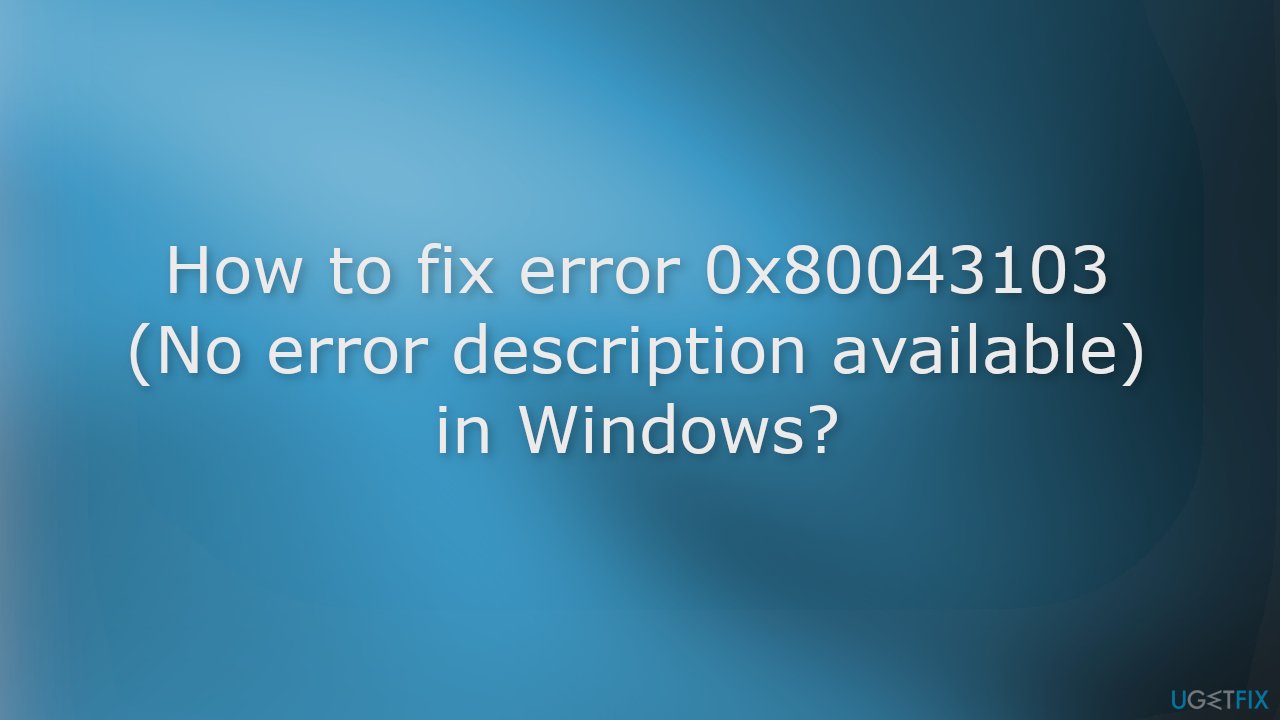
Solution 1. Restart the Computer
Sometimes, you just need to restart your system and try deleting the files again. A reboot could fix the issue if it's nothing more than a glitch. To do this, click on the Windows logo and choose the Restart option. After the system boots up, try to delete the problematic file again.
Solution 2. Move the File to Another Location
If you're struggling to delete a file, try moving it to another location and then deleting it from there. This workaround doesn't always work, but it's worth a shot. The most likely explanation for why this would work is either that the user doesn't have permission to delete files in the first location or that there's a bug causing the issue.
Solution 3. Disable Windows Search Service
- Open the Services window from the Start Menu
- Look for the Windows Search service
- Right-click on it, select Properties, select Disabled from the Startup option
- Click on the Stop button
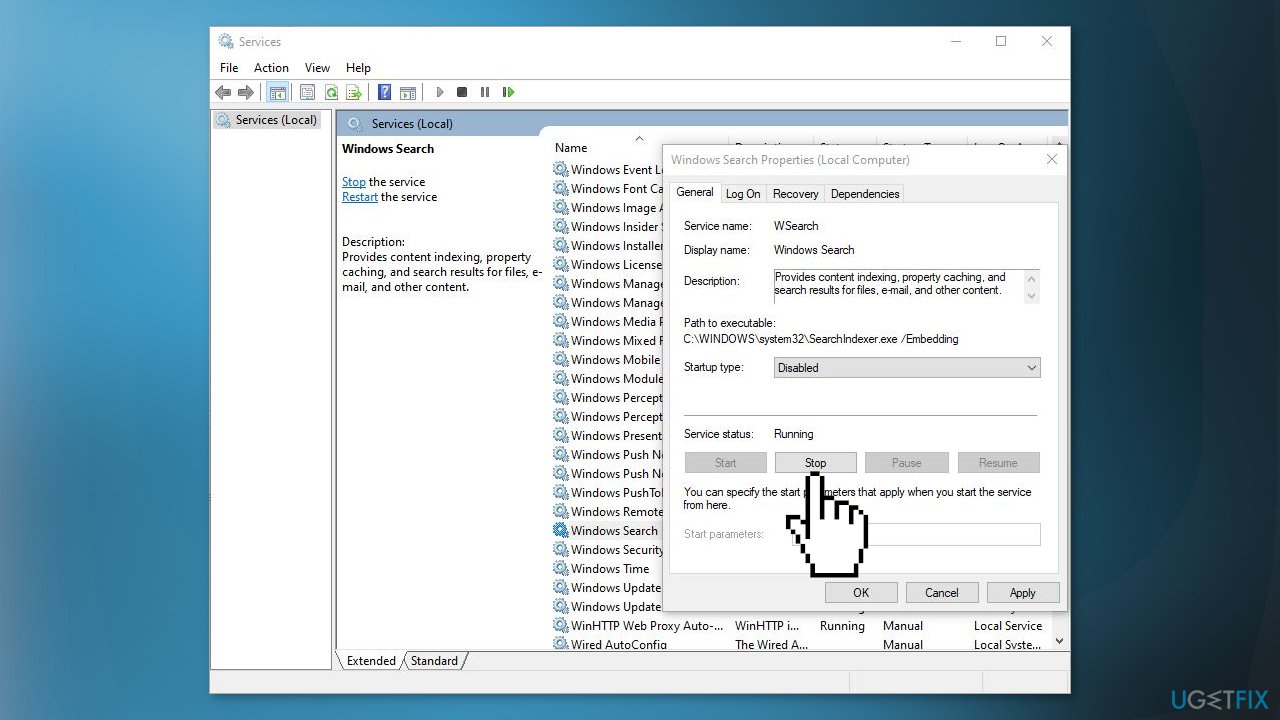
- Restart your computer and then try to delete the file again
Solution 4. Delete Files using the PowerShell
- Open PowerShell as an administrator from the Start Menu
- Execute the following command by changing it depending on your circumstances and pressing Enter:
Remove-Item <path of the folder or file> -Recurse -Force
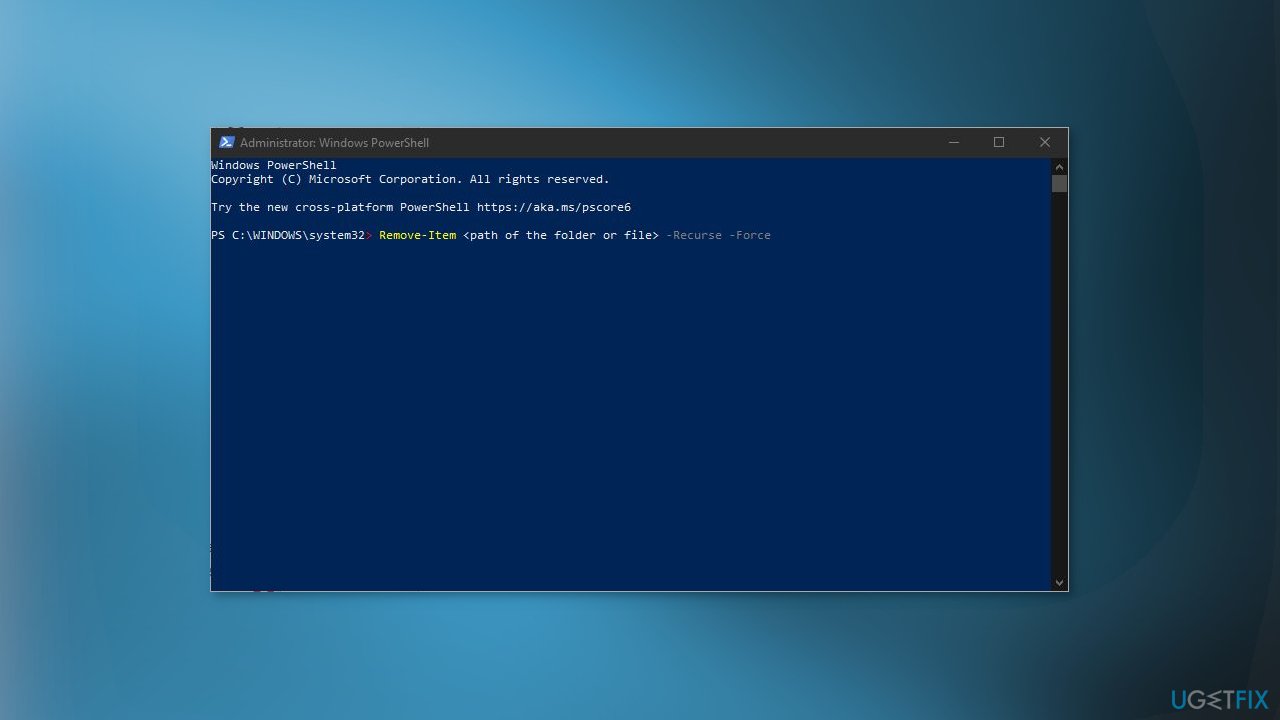
- This might not delete the files, in that case, restart your system and then run the command again
- See if the file was deleted successfully
Solution 5. Disable Windows Firewall
If the firewall is too protective and not letting you delete certain files, you can disable it temporarily. If you have a third-party antivirus, disabled its corresponding firewall. If you are only using Windows Defender Firewall, follow these next steps to disable it.
- Open the Control Panel
- Go to Security & System and click on Windows Defender Firewall
- Click on Turn Windows Defender Firewall on or off
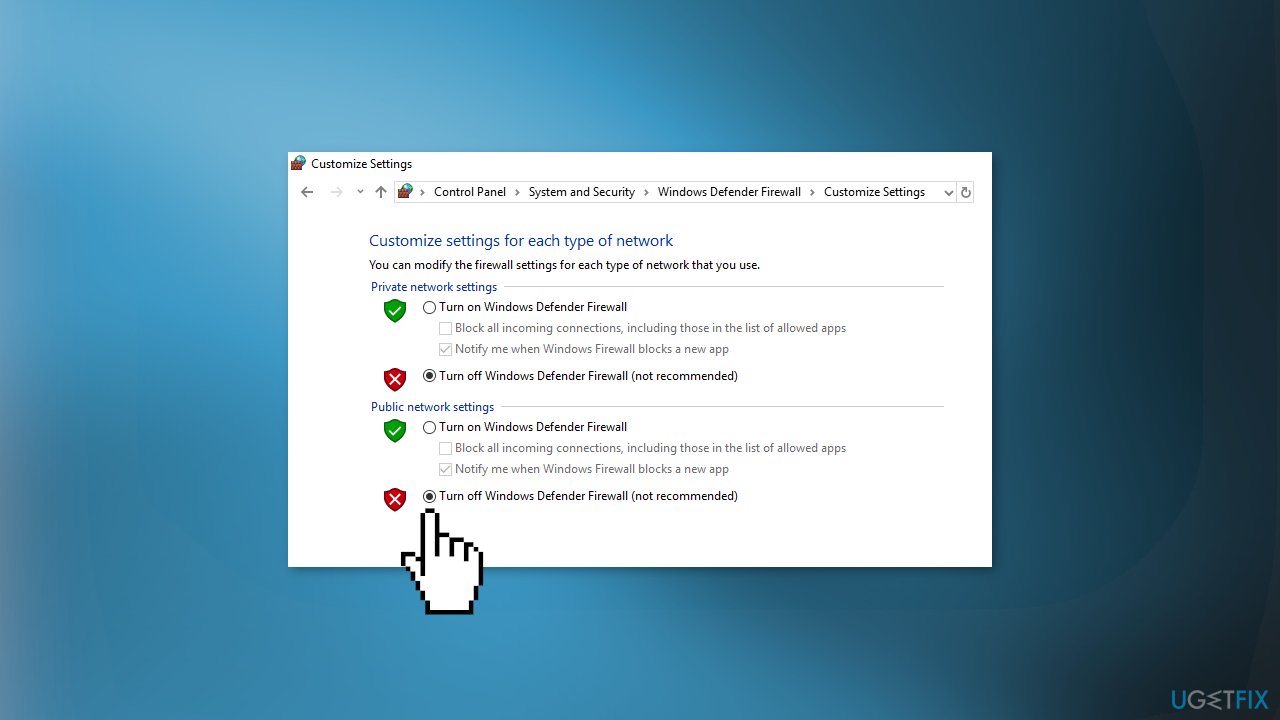
- Select Turn off Windows Defender Firewall for both Public and Private network settings
Solution 6. Try Clean Boot
A third-party app might be interfering with Windows services and not allowing you to delete a file. In that scenario, try doing a Clean Boot and then deleting the file. If successful in deletion, and to track down the cause, enable services one by one until you locate which app is creating the issue. Once discovered, either remove the app or disable its corresponding service.
- Type MSConfig in the Start Menu and hit Enter to open the System Configuration Utility
- Click on the General tab, and then click Selective Startup
- Clear the Load Startup Items checkbox, and ensure that Load System Services and Use Original boot configuration are checked
- Next, go to the Services tab
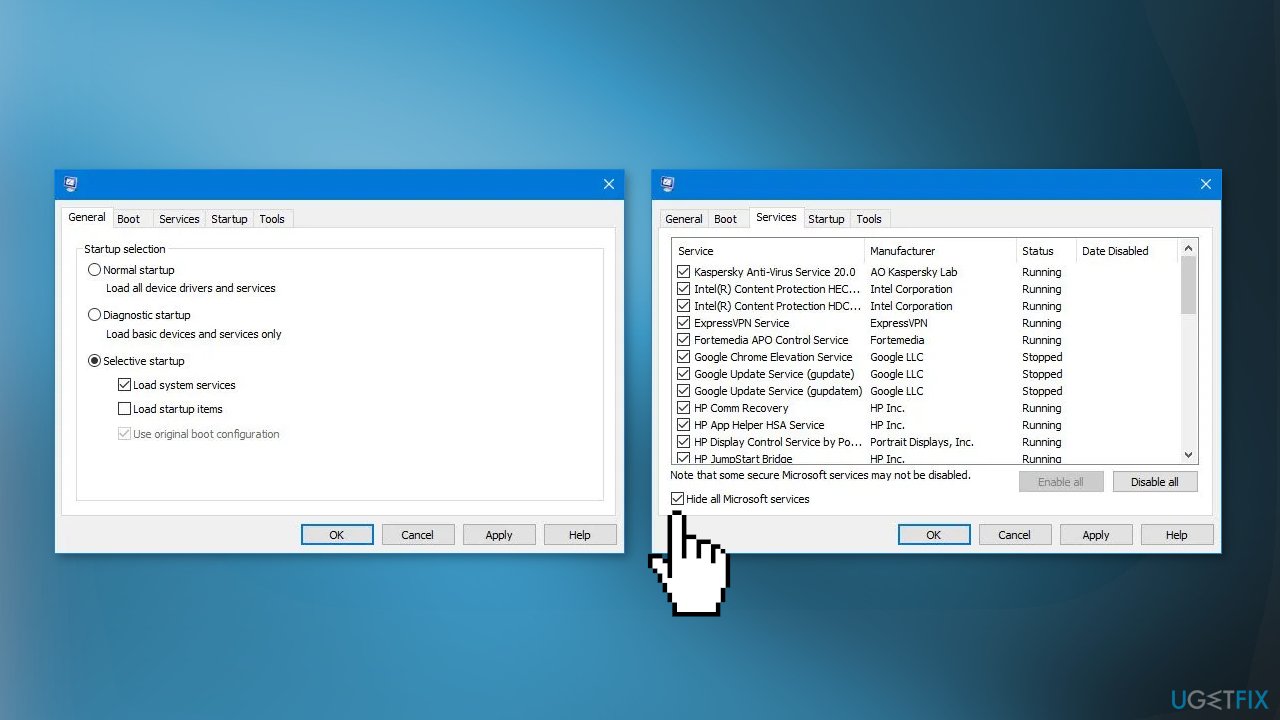
- Select the Hide All Microsoft Services checkbox
- Now click Disable all
- Click Apply and OK and restart the computer
Repair your Errors automatically
ugetfix.com team is trying to do its best to help users find the best solutions for eliminating their errors. If you don't want to struggle with manual repair techniques, please use the automatic software. All recommended products have been tested and approved by our professionals. Tools that you can use to fix your error are listed bellow:
Access geo-restricted video content with a VPN
Private Internet Access is a VPN that can prevent your Internet Service Provider, the government, and third-parties from tracking your online and allow you to stay completely anonymous. The software provides dedicated servers for torrenting and streaming, ensuring optimal performance and not slowing you down. You can also bypass geo-restrictions and view such services as Netflix, BBC, Disney+, and other popular streaming services without limitations, regardless of where you are.
Don’t pay ransomware authors – use alternative data recovery options
Malware attacks, particularly ransomware, are by far the biggest danger to your pictures, videos, work, or school files. Since cybercriminals use a robust encryption algorithm to lock data, it can no longer be used until a ransom in bitcoin is paid. Instead of paying hackers, you should first try to use alternative recovery methods that could help you to retrieve at least some portion of the lost data. Otherwise, you could also lose your money, along with the files. One of the best tools that could restore at least some of the encrypted files – Data Recovery Pro.
- ^ Chris Hoffman. Everything You Need To Know About the Blue Screen of Death. Howtogeek. Technology Magazine.
- ^ Tim Fisher. What Is the Windows Registry?. Lifewire. Software and Apps.
- ^ Difference between Cache and Cookies. Geeksforgeeks. IT Education.



